By Nicholas Young
The Natural Resource Ecology Laboratory (NREL) welcomed Dr. Redae Tesfai and Dr. Redwan Mohammed to Fort Collins, Colorado for their first visit to the United States in October 2021. Redae and Redwan arrived as visiting scholars from Eritrea and Ethiopia and worked with Dr. Paul Evangelista’s Lab at NREL and Dr. Patricia Moehlman, co-chair of the IUCN SSC Equid Specialist Group, to conduct conservation research on the critically endangered African wild ass in East Africa. The geographic range and population of the African wild ass has been steadily shrinking over the last few decades and there are now thought to be less than 500 individuals in the wild. The rare and elusive species lives in the Danakil desert, a region known for extreme heart, sparse vegetation, and active volcanoes that spans across Djibouti, Ethiopia and Eritrea in the horn of Africa. The species is in need of essential intercountry research to understand the current distribution and habitat requirements and Redae and Redwan’s research seeks to meet these needs. The two have conducted years of field research documenting behavior, location, and habitat preferences of this species in their respective countries. While they were in Fort Collins, the two visiting scholars received advanced instruction on wildlife distribution models and their application with the goal to apply these analyses to their current research. In addition to their research, the visiting scholars sampled the local food, drinks, and activities that included observing feral donkeys in Utah with equid NREL researchers, Dr. Kate Schoenecker and Dr. Sarah King, and listening to bugling elk at a ranch in Steamboat Spring, CO. The experience was extremely beneficial to their education, research, and the conservation of the African wild ass in Ethiopia and Eritrea. Their work has since led to the submission of a peer-reviewed scientific publication documenting and describing seasonal habitat preferences of the African wild ass in Eritrea, and they are currently working on another publication that would look at the entire current range of the species. Redae is hoping to return to NREL later in 2022 as a long-term scholar to continue his research and collaboration with NREL research scientists.
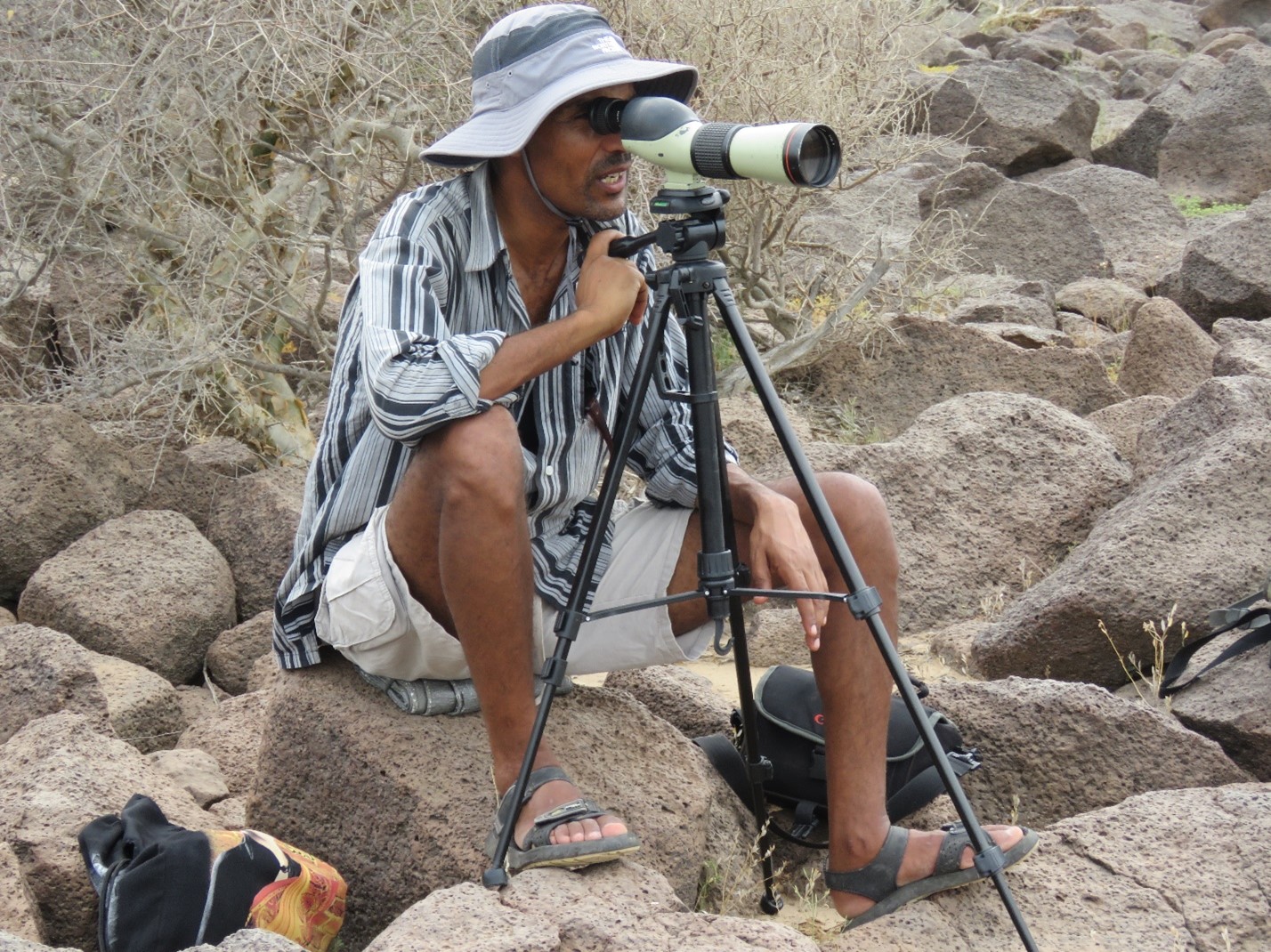
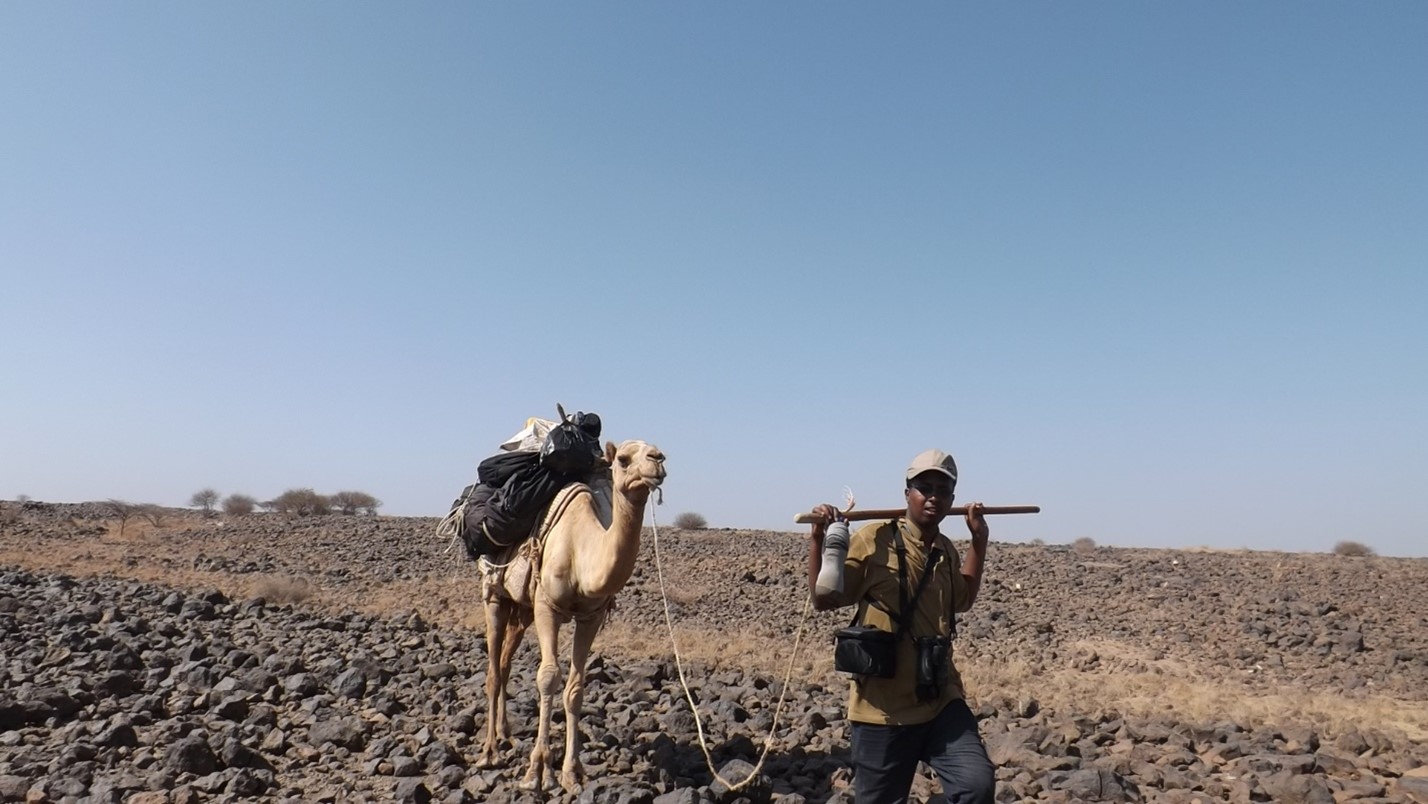
By Dr. Bekele Lemma
During my sabbatical from Hawassa University, Ethiopia, I had the opportunity to visit the Natural Resource Ecology Laboratory (NREL), Colorado State University (CSU) as a visiting scholar. This opportunity afforded me great experiences in different areas including advanced training in Geographical Information Systems (GIS), Remote Sensing, R statistical programming, random forest machine learning, the Carbon Benefit Project (CBP) tool, and the Daycent Model. These were all new tools and skills to me. Fortunately, Dr. Paul Evangelista and his Lab group have established excellent resources that I was able to use such as online GIS and Remote Sensing lessons and his staff, Rebecca Girma and Peder Engelstad who are both research associates in the Evangelista Lab, provided additional support and answered my questions.
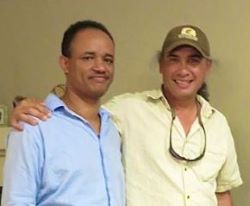
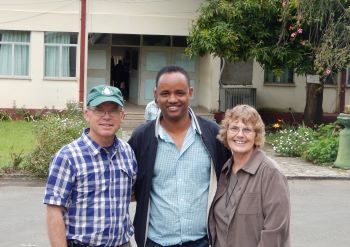
Apart from the research related activities, I visited the Denver Museum of Nature and Science and Colorado State University's Mountain Campus with Bob Sturtevant to observe field-based courses in forestry and natural resources. I had unforgettable experiences at Evangelista Lab happy hours, holiday parties and hosted dinners in the homes of Robert Sturtevant, Nick Young, Gabriel Senay and Ethiopian born Americans. I enjoyed different foods in many local restaurants often accompanied by Rebecca Girma and Betty Astella. Spiritually, the fellowship I found at 'Foothills Assembly of God' church was very welcoming. Overall, I had a great time during my stay at NREL and I would like to thank Dr. Paul Evangelista for facilitating my visit and all the support provided by him, his Lab and fellow researchers at NREL.
By Brian Woodward and Rebecca Girma
Dr. Birhanu Belay, a Research Director and Curator at the Gullele Botanical Garden in Addis Ababa, Ethiopia, recently graduated with his doctoral degree in Botany from Addis Ababa University in Ethiopia. His research focused on plant biology and biodiversity. Dr. Paul Evangelista of the Natural Resource Ecology Laboratory (NREL) served as an external member on Dr. Belay's graduate committee and dissertation research titled "Vegetation distribution, land use pattern and soil seed bank composition along altitudinal gradient from Lake Tana to Mount Guna, South Gondar, Northern Ethiopia." Dr. Belay is an ecologist and an expert botanist who has collaborated with Colorado State University (CSU) for multiple years on NREL research projects in the Bale Mountains of Ethiopia.
By Nicholas Young
Steve Chignell, a Colorado State University (CSU) alum in the Department of Ecosystem Science and Sustainability, recently published a paper describing the complex water dynamics in the Bale Mountains, Ethiopia titled "Afroalpine Wetlands of the Bale Mountains, Ethiopia: Distribution, Dynamics, and Conceptual Flow Model" in the Annals of the American Association of Geographers. Steve and his CSU co-authors (Dr. Melinda Laituri, Nicholas Young and Dr. Paul Evangelista) describe and illustrate how water accumulates and flows off the largest contiguous alpine habitat in Africa, the Sanetti Plateau. This area has undergone rapid land use change, which has caused some concern since it serves as a critical water source for over 12 million people in the region. Steve and his co-authors found that the Bale Mountains are subject to extreme fluctuations of water between the wet and dry season. They found this by spatially modeling the extent of wetlands at multiple periods throughout the year using field surveys, remote sensing and machine learning techniques. In addition, they identified that the geological structure of the Bale Mountains facilitates and regulates a surface and ground water flow and distribution. This new research provides an essential baseline of the water dynamics in the region and will be the foundation for additional water connectivity research and conversation planning, especially in the face of climate change.
By Rebecca Girma
Dr. Bekele Lemma, a Soil Scientist and an Associate Professor of Hawassa University, Ethiopia is visiting the Natural Resource Ecology Laboratory (NREL) at CSU to learn remote sensing and biogeochemical models that he will incorporate in his research on estimating soil organic carbon. Dr. Lemma has held multiple positions at Hawassa University, in Wondo Genet College of Forestry and Natural Resources and College of Natural and Computational Sciences, since 1996. He teaches undergraduate, graduate and postgraduate courses and has published more than 15 peer-reviewed scientific papers. His expertise lies in the areas of soil fertility, biogeochemistry, and climate change.
By Nicholas Young
Congratulations to Warner College of Natural Resources students Bethlehem Astella and Cara Steger! These PhD graduate students were awarded fellowships through the Center of Collaborative Conservation for two separate projects that will be conducted in Ethiopia. Bethlehem’s project will research conservation results from a new collaborative community based conservation coffee business located outside a National Park (Bale Mountains National Park) in the southern highlands of Ethiopia. She hopes to find the business practices and structure result in reforestation and forest conservation in the region. Cara’s project is located in the Guassa Community Conservation area in central Ethiopia. This region is experiencing shrub encroachment that is outcompeting a native grass that is critical to the local community’s livelihood. Cara is teaming up with her practitioner partner Admassu (pictured with Cara) to hold a workshop to enhance the participants' ability to address this concern in the future through planning, monitoring and resource management. Their projects are a part of the ninth cohort of the Center for Collaborative Conservation Fellows. Congratulations again!
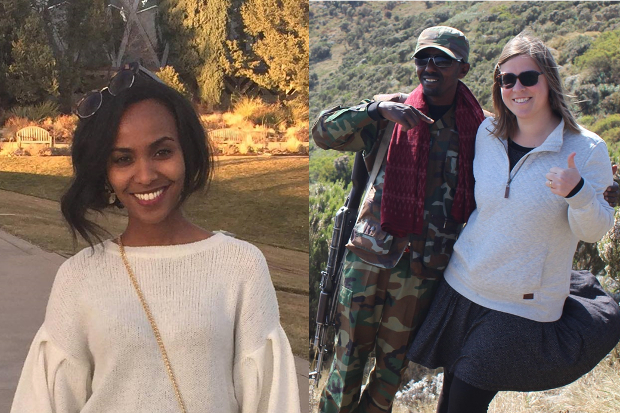
By Brian Woodward
Mr. Birhanu Belay, Research Director at the Gullele Botanical Garden in Addis Ababa, Ethiopia, visited Colorado State University’s Natural Resource Ecology Laboratory in the Fall to study geospatial and remote sensing techniques and their application in ecological research. 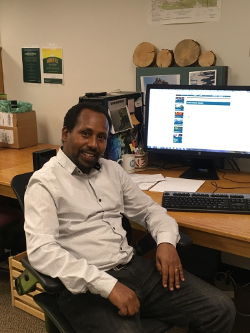 Birhanu is an ecologist and expert botanist that has collaborated with Colorado State University for multiple years on research projects of NREL carried out in the Bale Mountains of Ethiopia. He is also a graduate student finishing his doctoral degree in Botany at Addis Ababa University where Dr. Paul Evangelista is serving as an external committee member.
Birhanu is an ecologist and expert botanist that has collaborated with Colorado State University for multiple years on research projects of NREL carried out in the Bale Mountains of Ethiopia. He is also a graduate student finishing his doctoral degree in Botany at Addis Ababa University where Dr. Paul Evangelista is serving as an external committee member.
Birhanu was mentored by GDPE graduate student Brian Woodward during his time at CSU. Additional NREL scientists that served helped advise him with his studies included Dr. Bill Romme, Dr. Tom Stohlgren, Dr. Amanda West, and Nicholas Young, each sharing their expertise with Birhanu on topics ranging from forest biometry to image classification and species distribution models. Birhanu was able to apply these techniques to his current research helping to better understand the spatial and topographical gradients of plant biodiversity in the Lake Tana watershed in the northern region of Ethiopia. Birhanu was presented a certificate of completion from NREL for his participation in this intensive training program. Birhanu’s visit was funded by Addis Ababa University and The Murulle Foundation with in-kind support and training provided by NREL and the Evangelista Laboratory.
By Dr. Paul Evangelista
Sarah Carroll and Brian Woodward were awarded Graduate Research Fellowships from the National Science Foundation (NSF). They will each receive funding to conduct research and complete their PhDs in Graduate Degree Program in Ecology at Colorado State University. Sarah’s research will be studying the Cascading Effects of Climate on Human and Wildlife Communities in the Okavango Delta in Botswana, while Brian will be studying the Ecological Effects of Fire in the Bale Mountains in Ethiopia. Congratulations to them both!
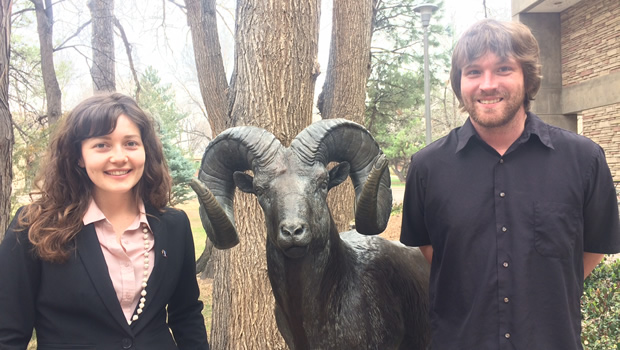
April 15, 2017
Drs. Sarah King and Paul Evangelista of the Natural Resource Ecology Laboratory attended the 1st African Wild Ass Range State Meeting in Bonn, Germany on March 6-7. The critically endangered African wild ass one ranged from the Atlas Mountains in Morocco to Somalia. Today, only 200 mature individuals are believed to persist. Hosted by the Convention on the Conservation of Migratory Species (CMS) and the United Nations, the meeting was called to “produce an international plan to secure the future of the species by strengthening transboundary cooperation and foster a framework to implement conservation measures.” Participants from the Ethiopian and Eritrean wildlife departments, the International Union for Conservation of Nature (IUCN), German Federal Ministry for the Environment, and others attended the two day meeting. Dr. King attended as the Co-Chair of the IUCN Antelope Specialist Group under the Species Survival Commission. Dr. Evangelista was invited as an expert on the species’ status in Somaliland where he is currently overseeing wildlife surveys with the government. More information on the African wild ass and the on-going efforts can be found at the CMS website
By Robert Sturtevant, Colorado State Forest Service (Retired), U.S. Peace Corps Volunteer (2010-2013)
After three years and hundreds of volunteer hours, over 20,000 books and academic journals from the CSU community traveled half-way across the world to Hawassa University in Ethiopia, where they are populating the university's library shelves. This completes a commitment made by CSU President Tony Frank during his visit to Hawassa University in December of 2012. During that visit, Dr. Frank signed a Memorandum of Understanding with the Ethiopian university making Hawassa and Colorado State International Strategic Partners, the first of two such partnerships in Africa.
Ethiopian universities have expanded from two in 2000 to 29 in 2015 with at least 11 more under construction. This rapid expansion has created a critical need for trained faculty and teaching materials. Such was the case at Hawassa where the new library on campus only held a few books. After Dr. Frank and his staff toured the facility, he stated that "the one thing we can do right away is help the university with books." With that statement, the Books for Hawassa University project was initiated.
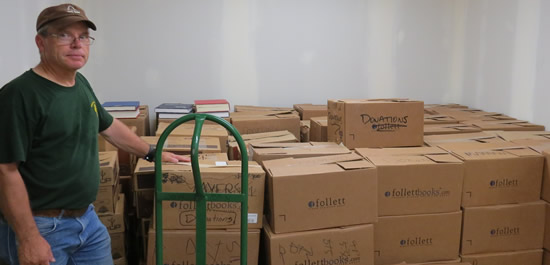
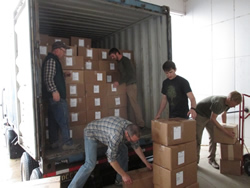
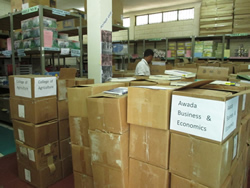
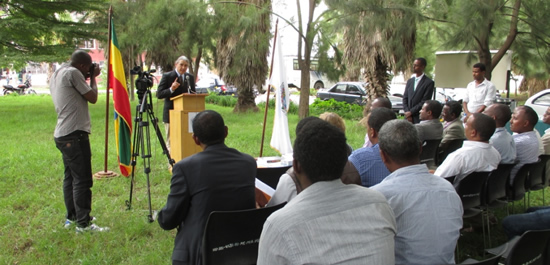
By Cara Steger and Amanda West
It can be argued that the success of humankind and the progress of civilization are due in large part to the control and use of fire, which began as far back as 1.5 million years ago. Throughout Africa today, people with close relationships to the land use fire as a tool to modify their environment. For example, seasonal burning is common amongst pastoralists as a way to stimulate new growth for livestock forage, and agriculturalists use fire to clear fields before plowing. Fire remains an important tool for traditional livelihoods, and the people who depend on it are vulnerable to legislation that seeks to reduce the use of fire in rural areas. This legislation is informed by the popular perception that fire is a purely destructive force. Scientific consensus on the effects of anthropogenic fire on ecosystem biodiversity in the highlands of Ethiopia is still unclear, and more research is needed to understand these important systems.
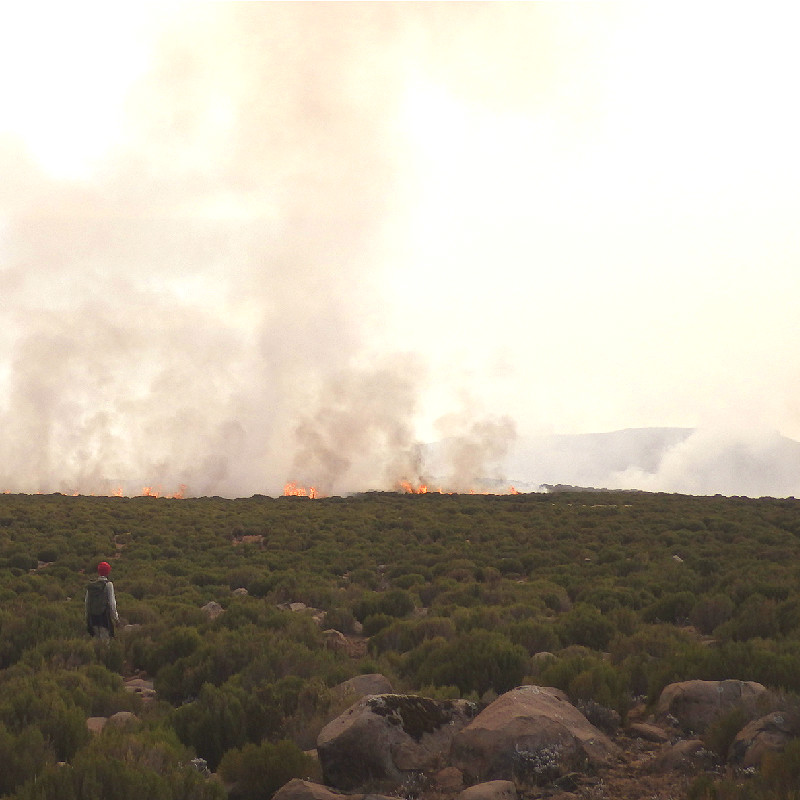
To address this gap in our knowledge, four students at Colorado State University sought to explore the history of fire in the Bale Mountains of Ethiopia, supported by sponsorship from the NASA DEVELOP program. This region is an internationally recognized biodiversity hotspot, and Ethiopian agro-pastoralists have a long history of managing high-elevation shrublands with fire. However, these processes are largely unstudied, and as such might be having unintended consequences on the ecology of the region, such as the reduction of habitat for the endangered mountain nyala, or the alteration of soil dynamics. Understanding the past frequency and extent of burning was a top priority for scientists and park managers seeking to balance conservation goals with the needs of local communities.
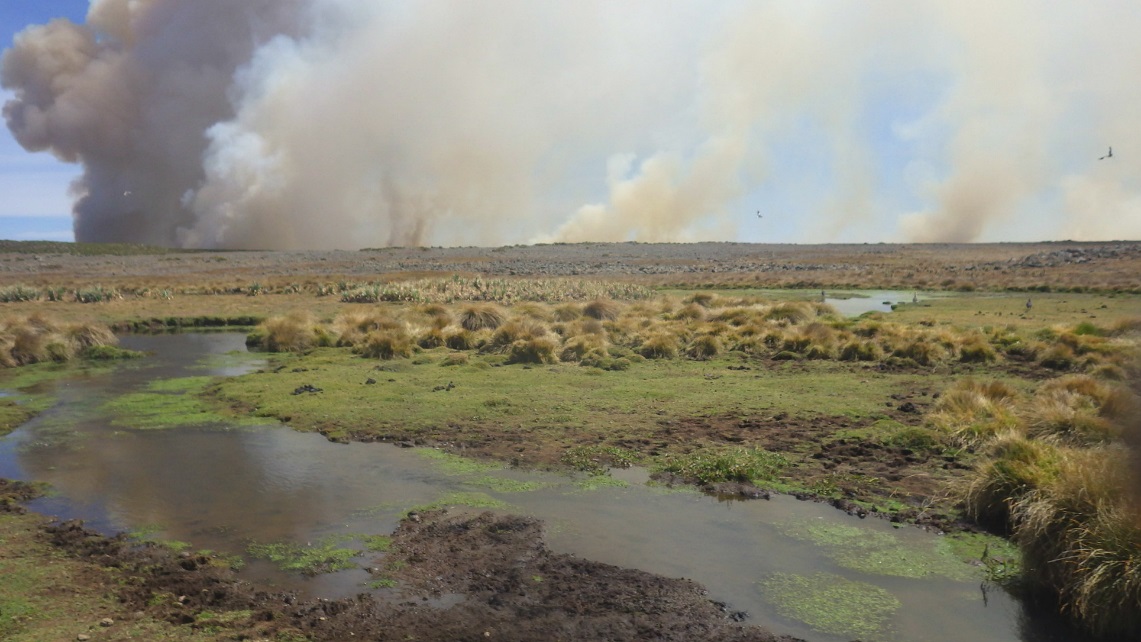
The students analyzed satellite imagery from a 42 year time series to produce maps of historical fire extent. They found that 35% of the shrubland vegetation in the study area has burned since 1995, but very few locations actually burned more than once in that 20-year period.
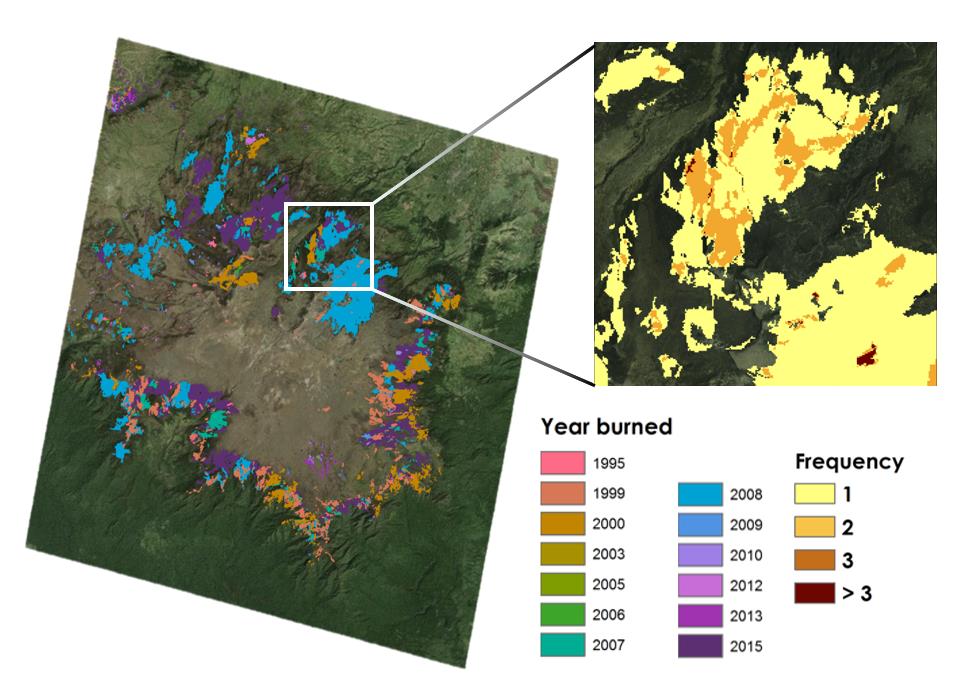
Maps and spatial data of fire date, extent, and frequency were disseminated to project partners working in Ethiopia, including park managers and the non-profit Murulle Foundation. These data will support detailed studies of fire ecology in Bale and inform management approaches that aim to conserve the region's natural resources and sustain the social-ecological systems they support.
By Kate Jeracki
This article was originally posted on Colorado State University's SOURCE and is re-posted here with permission.
More than 20,500 up-to-date textbooks and recent scholarly journals – that’s over 33,000 pounds of materials packed into 641 boxes – are on their way to Hawassa University in Ethiopia, thanks to a dedicated group of volunteers and a generous commitment from Colorado State University.
CSU and Hawassa signed a memorandum of understanding to develop collaborative relationships between the two universities’ colleges of agriculture and natural resources in 2012.
When CSU President Tony Frank visited the natural resources college at Hawassa University three years ago, he said, “I came away from our visit to Ethiopia feeling very enthusiastic about the possibilities, large and small. So much of the credit for our strong ties in the country and with Hawassa University lies with (Natural Resource Ecology Lab research scientist) Paul Evangelista, whose personal passion and research interests have laid the groundwork for an enduring partnership around areas of real strength at CSU: wildlife management, sustainability, water resources, and more.”
However, Frank and Evangelista both noted during that visit that while Hawassa had a new library facility, it lacked sufficient library materials to fill its shelves and fully support the needs of the academic community. So Frank and Evangelista turned to CSU’s “boots on the ground” in Ethiopia to rectify the situation.
At the time, Peace Corps Volunteers Bob and Nancy Sturtevant were posted at Wondo Genet College of Forestry, a campus of Hawassa University north of the town of Shashemene (home of the Rastafarians). Although Bob had already retired from CSU, and their Peace Corps tour of service ended in December 2012, they put their two decades of experience collecting books for disadvantaged schools around the globe toward stocking the Hawassa library.
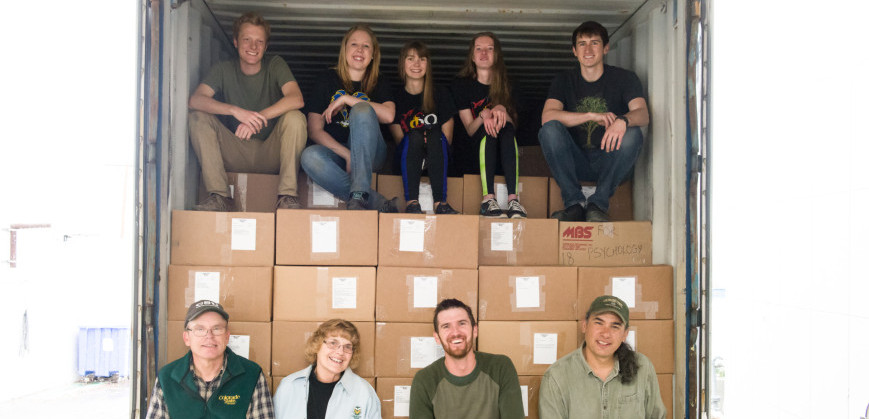
Since 2013, the Sturtevants have gathered excess academic books and journals and other materials from CSU students, faculty, staff, and community members as well as from other universities around the nation and prepared them to send to Ethiopia.
On April 16, they finally packed the massive collection, which includes texts on subjects from health and psychology to computer science and statistics as well as natural resources and agriculture, into a semi-trailer container for shipment, which is expected to take from three to six months, depending on how long the boxes take to clear Ethiopian customs. Total cost of the effort is about $11,000, funded by the CSU President’s office.
“Bob and Nancy Sturtevant have a remarkable history, during their years at CSU, of conducting book drives — and they were able to use that knowledge and experience to build a collection that will really be transformative for Hawassa University,” Frank said. “I cannot say enough how grateful we are to the Sturtevants for their tireless work to make this happen in a way that will really serve the international academic community. Their leadership on this project has been exceptional.”
The Sturtevants were aided in this massive undertaking by Evangelista and a group of dedicated volunteers – both graduate students who study with Evangelista and the other NREL faculty who teach at Hawassa and members of the on-campus service fraternity Alpha Phi Omega. For three years, this group has collected, sorted, stored, and prepared books for the Ethiopia shipment, using vacant space in the old Centers for Disease Control Building on the Foothills Campus.
“Countless people across our community donated their scholarly resources to make this shipment possible,” Frank said. “This has been an important project for CSU as well as for our academic partners in Ethiopia, and it’s a wonderful demonstration of the strong bond between our institutions and the people of Hawassa and CSU. Thanks to all who have made it possible.”
August 18, 2014
The Ecological Society of America (ESA), the largest organization of professional ecologists, held its 99th annual meeting in Sacramento, California from August 10-15, 2014.
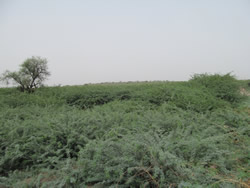
PhD student in the Graduate Degree Program in Ecology participated in the Remote Sensing and Image Analysis session through a contributed talk. He presented his research titled “Mapping the distribution of invasive Prosopis juliflora in Ethiopia using MODIS and climate predictors”. Prosopis juliflora, also known as mesquite, is a highly invasive shrub introduced to Ethiopia from the Americas. Mapping its distribution is a critical need in formulating management strategies and understanding its ecological and social impacts. The presentation was co-authored by Drs. Paul Evangelista, Catherine Jarnevich and Melinda Laituri. An expanded version of this research is currently under review for publication.
Click here for a a map of the potential distribution of Prosopis juliflora in Afar, Ethiopia
July 11, 2014
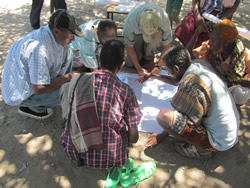
January 3, 2014
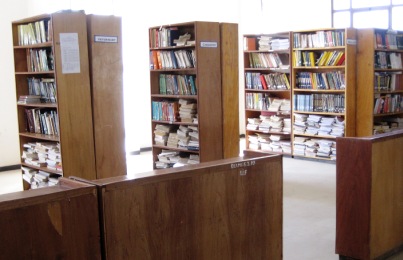
In the Spring of 2012, Dr. Yosef Mamo, President of Hawassa University came to Colorado State to sign a Memorandum of Understanding creating a collaborative relationship between the two universities. Later that fall, CSU President Dr. Tony Frank and nine CSU Administrators and Faculty traveled to Ethiopia to create the first International Strategic Partnership between CSU and an African university (a second was signed with University of Nairobi shortly after). The group met with university staff, toured the facilities and discussed how to best work together. During the University tour, the CSU delegation walked through the new library building.
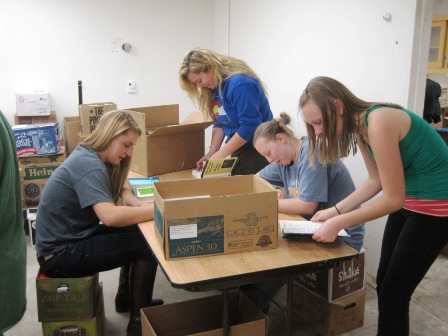
Bob and Nancy Sturtevant, Peace Corps volunteers from CSU, who were completing their two year service at Hawassa University’s natural resource campus, volunteered to help manage the book collection. Returning to Fort Collins in January 2013, they started to organize the project on campus. A call went out for books and journals and both the university staff and community answered with ample donations. The CSU Bookstore has supplied about one third of
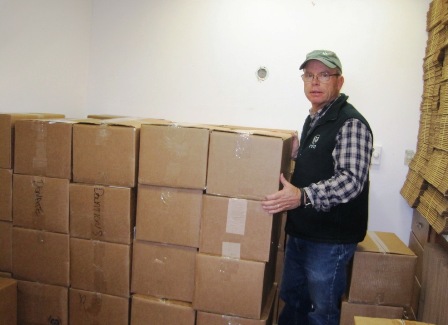
The Murulle Foundation, a Fort Collins non-profit which conducts development work in Ethiopia is helping with the book collecting and processing. The group is also securing funding to purchase sets of classroom books specifically focused on natural resources. The Alpha Phi Omega National Service Fraternity at CSU will be doing a large part of the sorting and cataloging of the materials as well as other volunteer groups.
Although we are now in the sorting and boxing stage, donations are still being accepted. Books and journals should have a publication date of less than 15 years. Subjects include agriculture, veterinary science, engineering, medicine/health, natural resources, natural sciences, business, technology, construction management, sport sciences, tourism and similar areas. For additional information or for book pick up, contact Bob Sturtevant at 970-430-8651 or robert.sturtevant@colostate.edu.
October 3, 2013
Paul Evangelista, David Swift, Randy Boone, Kathy Galvin and Stacy Lynn from the Natural Resource Ecology Laboratory (NREL) were awarded a research grant from the National Science Foundation. The two-year proposed research, Assessing Vulnerability of Provisioning Services in the Southern Highlands of Ethiopia, was funded by NSF's Coupled Natural and Human Systems Program. Specifically, the research will examine the uses and importance of plants and wildlife to rural communities, and their vulnerability or resilience to climate change and growing human/livestock populations.
Use of natural resources and lands by humans is decreasing biological diversity with unknown but potentially large effects on the future availability of resources to humans. This project will investigate the feedback loop between biodiversity and the usefulness of natural areas for people. The study area in the Bale Mountains of Ethiopia is a good example of an area where biodiversity is high but decreasing. It is an area where humans use natural species for food, medicine, and fuel and also use lands for settlement, agriculture, and grazing. Researchers will interview local residents to learn how they use and value wild species of plants and animals and where they gather and hunt them, and survey the area to map the distribution and abundance of these and other native species. From these data, together with likely scenarios of local human population growth and climate change, it will be possible to assess the risks of further loss of species and the consequent risks of loss of usefulness of the area for people.
This project has immediate importance for society -- it will improve understanding of how human well-being depends on nature, and enhance our ability to predict the future societal costs of various present uses of natural resources. The research also has specific importance for the conservation of both nature and culture in an area that is rich in both. As part of an ongoing collaboration between scientists and educators in the U.S. and Ethiopia, the work will strengthen international scientific cooperation.
October 1, 2013
The CSU book drive for Hawassa University Libraries in Ethiopia has been extremely successful. The project’s coordinator, and retired Colorado State Forester, Bob Sturtevant has reported that over 500 boxes of books and scientific journals have been collected to date. Book donations have come from all CSU academic colleges and departments, faculty and students, the Morgan Library, CSU Health Network and Alumni. Several student groups are preparing the arduous task of documenting each book and journal, separating them into academic disciplines, and repacking them for shipment at the end of the year. There is still a need for donations to meet the project’s goal of filling a large shipping container, which can hold as many as 40,000 books. Special thanks to President Tony Frank and CSU donors for their generous support with shipping costs, and to The Murulle Foundation for raising additional funds to purchase.
Click here for a PDF version of the informational flyer about the book drive.
September 1, 2013
The School of Global Environmental Sustainability (SoGES) is pleased to announce the new Sustainable African Ecosystem and Societies (SAES) at CSU.
As one of the 2013-2014 Global Challenge Research Teams awarded by SoGES, Kathy Galvin, Robin Reid, Paul Evangelista, Sue Vandewoude, Jessica Davis and Stacy Lynn proposed the new initiative designed to (1) identify the state of knowledge and current intra-CSU collegiate participation on biodiversity, conservation and management issues in Africa; (2) Explore research and education opportunities including innovative ways to address the issues and innovative management solutions to solve problems, and; (3) Develop a CSU center or institute to facilitate this cross-campus.
Future events, such as a workshop to showcase and facilitate new African studies, are already being planned. New events and activities, and other CSU resources for African studies, can be found at http://saes.colostate.edu/.
February 12, 2013
Colorado State University is continuing to strengthen its international engagement and enhance its global impact as a leading research institution. At the end of 2012, a delegation from Colorado State University traveled to Africa to sign Key Strategic Partnerships with Hawassa University in Ethiopia and University of Nairobi in Kenya. The two strategic partnerships are the culmination of decades of ongoing collaboration and outreach efforts between CSU researchers and their African counterparts, and with the support of University leaders will help to strengthen institutional cohesion and expand opportunities for even greater multidisciplinary collaboration in the future.
The strategic partnerships provide financial resources to support a variety of initiatives such as faculty exchange, collaborative research, short-term teaching, shared academic programs, joint degrees, and joint research institutes. The partnerships were led by scientists from CSU’s Warner College of Natural Resources and are an integrated, cross-campus effort including involvement from multiple academic departments at Warner, its Center for Collaborative Conservation and Natural Resource Ecology Laboratory, the College of Agricultural Sciences, the College of Veterinary Medicine and Biomedical Sciences, the School for Global Environmental Sustainability, and others.
“CSU’s Key Strategic Partnerships in Ethiopia and Kenya are two of 15 such partnerships around the world where the University is focused on developing effective opportunities for multi-disciplinary collaboration,” said Jim Cooney, vice provost of International Programs at CSU. “These partnerships and the support from CSU President Tony Frank are a testament to the international involvement of our faculty and the strong relationships they have built in these countries.”
Check out photos from the delegation’s trip on Flickr.
CSU’s partnership with University of Nairobi was led by Robin Reid, director of the Center for Collaborative Conservation, joint professor in the Warner College of Natural Resources, senior research scientist with the Natural Resource Ecology Laboratory (NREL) and Warner College alumna. Reid’s work in Africa is world renowned, and she has a long history and strong friendship with her colleagues at the University of Nairobi and the Maasai people in Kenya.
Reid spent more than 20 years living in Kenya only half a mile from University of Nairobi, and continues to pioneer collaborative solutions for critical conservation issues in the region. She also recently published her award-winning book “Savannas of our Birth” which tells the sweeping story of the role that East African savannas played in human evolution, how people, livestock, and wildlife interact in the region today, and how these relationships might shift as the climate warms, the world globalizes, and human populations grow.
As part of the delegations trip to Kenya, they made a special visit to Base Camp for Reid’s research. In 2012, Reid and her team of co-authors were awarded the prestigious ESA Sustainability Science Award for their collaborative paper which detailed their research in East Africa and development of a new community-based sustainability model that integrates local knowledge and community participation with scientific data. During the visit, Reid and the delegation exchanged gifts with the Maasai People and presented them with certificates to commemorate their valuable team work and contributions to the award-winning research.
“Whether it is CSU, Ethiopia or Nairobi - natural resources, agriculture, or veterinary medicine: the issues facing local and global communities continue to become intertwined and demand opportunities for cross-disciplinary, international collaboration,” said Reid. “These unique partnerships give us the opportunity to work together and make a genuine impact around the globe, and also to enrich education and research here in Colorado.”
The Ethiopian Key Strategic Partnership with Hawassa University was led by Paul Evangelista, research scientist with CSU’s NREL and Warner College alumnus. Evangelista’s lifelong passion for collaborative research and outreach in Ethiopia began in 1999. Since then, he has continued to work on dozens of studies and initiatives including wildlife management and conservation, floral inventories, and mapping of ecosystem services that are critical to the livelihoods of local people. He has also been involved with strengthening the teaching capacity of rural schools, construction of water-supply systems, reforestation of native trees, professional training for wildlife managers, and other partnerships that collectively address Ethiopia’s environmental and social challenges from multiple approaches.
CSU signed an International Memorandum of Understanding with Hawassa University in January of 2012, and the new strategic partnership strengthens the commitment between the institutions and provides enhanced access to opportunities for collaborative research and education. In addition to a wide range of established faculty involvement and research partnerships, the University also has strong ties with Ethiopia through its Peace Corps involvement. Warner College retired instructor and forester Bob Sturtevant and his wife Nancy have spent two years serving with the Peace Corps at Hawassa University in Ethiopia and have helped coordinate collaborative research opportunities and graduate student exchanges between the two universities. Other ties with Ethiopia, such as the Peace Corps Master’s International (PCMI) program allows student volunteers to pursue a unique Master’s degree through CSU coursework and two years of service. For example, PCMI student Carl Reeder recently returned from two years of volunteer service working with the Ethiopian Wildlife Authority mapping the country’s national parks and protected lands. Reeder is now completing his thesis and expects to graduate this summer.
The CSU delegation included:
Reid and Evangelista are just two examples of a broad variety of faculty and researchers across campus who have made incredible commitments and collaborative partnerships in Africa. The Key Strategic Partnership between CSU and University of Nairobi and Hawassa University will help to strengthen and continue the legacy of collaboration and interdisciplinary research between the institutions for years to come.
November 26, 2012
In November 2011, the Natural Resource Ecology Laboratory (NREL), Colorado State University (CSU) and the United States Forest Service International programs (USFS) reached an agreement in support of the US Agency for International Development (USAID) funded Pastoralist Livelihood Initiative project, PLI II in Ethiopia.
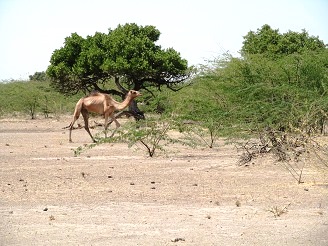
The initiative aims (among other things) to improve the management of rangelands, provide alternative forage for livestock, and manage water resources to maximize access for livestock in an effort to mitigate the effects of disasters and improve livelihoods of pastoralists in Ethiopia. Past USFS support to PLI II project were accomplished on areas such as rangeland planning, prescribed burning, management of invasive species and payment for environmental services. The NREL–USFS joint support for 2012 targeted rangeland planning and prescribed burning for Borena Zone in South East Ethiopia, and management of invasive Prosopis juliflora for the Afar region in North East Ethiopia.
Following the November 2011 agreement, Tewodros Wakie, a CSU PhD student who has previous work experience in Ethiopia and research interests in ecology and management of P. juliflora, was selected for the work as his research objectives fits in with that of PLI II objectives. Tewodros joined the CSU Graduate Degree Program in Ecology in August 2011 through the US Department of Agriculture (USDA), National Institute of Food and Agriculture (NIFA) fellowship. Deliverables included:
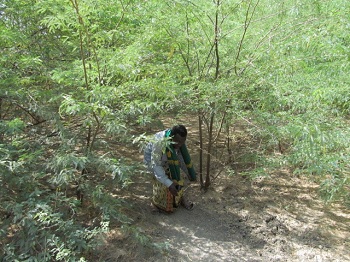 1. Marketing / business strategy for a specific alternative P. juliflora use that augment the pastoralist household economy.
1. Marketing / business strategy for a specific alternative P. juliflora use that augment the pastoralist household economy.
2. Framework guidelines of best practices for conversion of P. juliflora lands to productive lands.
3. Report summary on nature of P. juliflora expansion and threats in Ethiopia.
4. Report summary on GIS mapping of P. juliflora in specific pilot areas.
Consequently, the PhD student spent four months (February to May 2012) in Afar Ethiopia, meeting with pastoralists and collecting economic, socio-cultural, biological and geospatial data. After returning to CSU the student delivered a comprehensive report that addressed all objectives set by USFS and NREL. The student's work was overseen by Dr. Melinda Laituri and Dr. Paul Evangelista who also traveled to Ethiopia in February 2012.
Dr. Laituri is a professor in the Department of Ecosystem Sciences and Sustainability at CSU and Dr. Evangelista is a research scientist for NREL. Similar plans are underway for 2013. This successful partnership among CSU, NREL and USFS is expected to be used as a model for other graduate students in the future.
Download full report in pdf format here.
March 1, 2012
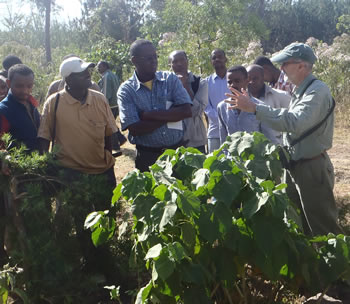 Faculty and scientists from the Natural Resource Ecology Laboratory (NREL) and Department of Ecosystem Science and Sustainability (DESS) recently visited Hawassa University to continue strengthening academic partnerships. Most of the two weeks were spent at the Wondo Genet College of Forestry and Natural Resources located about 45 km from the main campus. Funded by small travel grants by NREL, CSU International Programs, The Murulle Foundation, and the US Forest Service International Programs, the CSU team toured university facilities and different campuses, met with the university's president and administrators, and taught a number of short courses and training seminars. The team included Paul Evangelista, Dave Swift, Melinda Laituri and Bill Romme accompanied by two CSU graduate students; Tewodros Wakie from GDPE and Carl Reeder in the Peace Corp Master's International Program. The trip was organized and hosted by Peace Corp volunteers Bob and Nancy Sturtevant, both retired from the CSU community and serving at Wondo Genet. The trip was primarily organized to allow faculty members to meet, assess teaching and learning needs, and explore strategic ways to support and facilitate education in natural resource management and conservation.
Faculty and scientists from the Natural Resource Ecology Laboratory (NREL) and Department of Ecosystem Science and Sustainability (DESS) recently visited Hawassa University to continue strengthening academic partnerships. Most of the two weeks were spent at the Wondo Genet College of Forestry and Natural Resources located about 45 km from the main campus. Funded by small travel grants by NREL, CSU International Programs, The Murulle Foundation, and the US Forest Service International Programs, the CSU team toured university facilities and different campuses, met with the university's president and administrators, and taught a number of short courses and training seminars. The team included Paul Evangelista, Dave Swift, Melinda Laituri and Bill Romme accompanied by two CSU graduate students; Tewodros Wakie from GDPE and Carl Reeder in the Peace Corp Master's International Program. The trip was organized and hosted by Peace Corp volunteers Bob and Nancy Sturtevant, both retired from the CSU community and serving at Wondo Genet. The trip was primarily organized to allow faculty members to meet, assess teaching and learning needs, and explore strategic ways to support and facilitate education in natural resource management and conservation.
Wondo Genet College of Forestry and Natural Resources was established in 1978, primarily to train forest technicians under a two-year forestry degree. In the following years, the college developed Bachelor and graduate degree programs in all major natural resource fields. In 2000, the Wondo Genet and several other colleges in the area were brought together to form Hawassa University, now one of Ethiopia's largest universities. Wondo Genet now has nine undergraduate, eight MSc and two PhD degree programs in forestry, soils, watershed, natural resource economics and policy, wildlife management, geographic information science, and others. Many of Ethiopia's natural resource managers, whether foresters, park 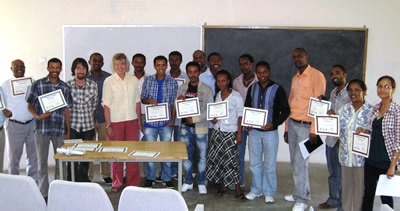 wardens or wildlife officials, have graduated with a BS degree from Wondo Genet (those with a MSc or PhD usually stay in academia or work for Non-Government Organizations). In recent years, the number of students enrolled in Wondo Genet has risen sharply, as has the demand for natural resource professionals. As a result, there are fewer trained instructors for more students creating large teaching gaps in many of the degree programs. The situation is further compounded by the lack of teaching materials, such textbooks, library books and on-line literature access.
wardens or wildlife officials, have graduated with a BS degree from Wondo Genet (those with a MSc or PhD usually stay in academia or work for Non-Government Organizations). In recent years, the number of students enrolled in Wondo Genet has risen sharply, as has the demand for natural resource professionals. As a result, there are fewer trained instructors for more students creating large teaching gaps in many of the degree programs. The situation is further compounded by the lack of teaching materials, such textbooks, library books and on-line literature access.
As part of the visit to Wondo Genet, the CSU team taught several short courses and seminars for faculty and graduate students. The courses included wildlife and livestock nutrition, forest and fire ecology, geographical information systems, watershed management, and writing for peer-reviewed publications. Each course totaled between five and eight hours over a week, and participants that attended a full series received a Certificate of Completion. Two additional teaching trips to Wondo Genet are already being organized for later this year (if funding can be secured) focusing on wildlife management, ecotourism and climate change. Future classes will be planned and taught by both CSU and Wondo Genet faculty and worth academic credit. In April, Jessica Davis, from CSU's College of Agricultural Sciences, will visit the Hawassa's College of Agriculture to continue building partnerships and collaboration between the two universities.
January 20, 2012
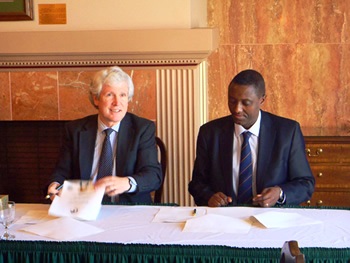 The first week of the 2012 spring semester marked a historic partnership between Colorado State University and Hawassa University, one of Ethiopia’s largest and oldest academic institutions.
The first week of the 2012 spring semester marked a historic partnership between Colorado State University and Hawassa University, one of Ethiopia’s largest and oldest academic institutions.
The president of Hawassa University, Dr. Yosef Mamo, spent a week visiting with different departments at CSU before signing a memorandum of understanding at a luncheon ceremony attended by dozens of faculty and administrators. During his opening remarks, Dr. Mamo talked about the number of collaborative partnerships already in place between the two universities, including the Colleges of Agriculture, Colleges of Forestry and Natural Resources and the US Peace Corp. Dr. Mamo not only hopes the MOU will help foster these partnerships in coming years, but open doors to other academic collaborations in business, health, veterinary medicine and other disciplines.
Jim Cooney, the Vice Provost for International Programs, announced at the ceremony that Hawassa University will become next Key Institutional Partner for CSU and the first on the African continent. A Key Institutional Partner is defined as an institution or geographic region where CSU is actively engaged in multiple academic and research activities across different colleges or departments.
Ethiopia currently has a number of CSU projects in place from the College of Agricultural Sciences, Warner College of Natural Resources (Natural Resource Ecology Laboratory; NREL), College of Business (Global Social and Sustainable Enterprise; GSSE) and the US Peace Corp (Master's International Program) with additional activities pending.
Dr. Mamo's visit was arranged and hosted by Dr. Jessica Davis from the Department of Soil and Crop Science who will be visiting Hawassa University in a few months. As a follow-up to the MOU signing, Dr. Paul Evangelista of the NREL will lead a CSU delegation to Wondo Genet College of Forestry (of Hawassa University) to teach several seminars and training workshops, and outline a strategy for shared graduate programs in ecology and natural resources. Accompanying Dr. Evangelista will be Drs. Melina Laituri, David Swift and Bill Romme from the NREL and Department of Ecosystem Science and Sustainability (DESS), and PhD student Tewodros Wakie from the Graduate Degree Program in Ecology (GDPE). As part of the visit, the CSU team will be teach on subjects related to watershed sciences, wildlife and livestock nutrition, geographic information systems (GIS), forest ecology, fire ecology and publishing in peer-reviewed scientific journal. The team will also be joined by three CSU Peace Corps volunteers currently serving in Ethiopia.
December 30, 2011
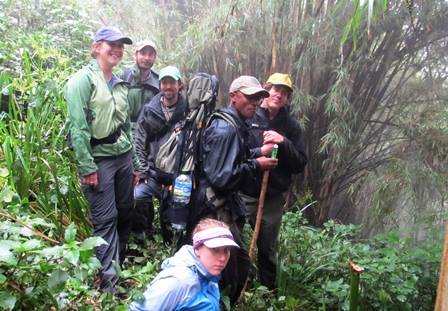 In October, 2011 researchers from the Natural Resource Ecology Laboratory (NREL) at CSU traveled to a remote portion of the Bale Mountains, Ethiopia to collect vegetation and wildlife data. The researchers teamed up with Peace Corps volunteers stationed in Ethiopia to help with the field work and logistical coordination.The data were collected in a framework that will enable the researchers to investigate ecosystem provisions, biodiversity, and species abundance spatially and under varying levels of human disturbance. This research continues from previous work by the NREL that was focused on areas outside the national park but still within the Bale Mountains. By sampling environments across a range of elevation gradients and human land uses, the team will be able to gain an understanding of how these drive the diversity and abundance of vegetation and wildlife. Additional data collection efforts are in development that will focus on collecting traditional ecological information associated with the study area with the hopes to integrate these data to understand the relationships among vegetation, wildlife, and people in the unique Bale Mountains region. This project has been funded by The Murulle Foundation, a Fort Collins based non-profit organization that has been supporting biodiversity research in the Bale Mountains for over 10 years.
In October, 2011 researchers from the Natural Resource Ecology Laboratory (NREL) at CSU traveled to a remote portion of the Bale Mountains, Ethiopia to collect vegetation and wildlife data. The researchers teamed up with Peace Corps volunteers stationed in Ethiopia to help with the field work and logistical coordination.The data were collected in a framework that will enable the researchers to investigate ecosystem provisions, biodiversity, and species abundance spatially and under varying levels of human disturbance. This research continues from previous work by the NREL that was focused on areas outside the national park but still within the Bale Mountains. By sampling environments across a range of elevation gradients and human land uses, the team will be able to gain an understanding of how these drive the diversity and abundance of vegetation and wildlife. Additional data collection efforts are in development that will focus on collecting traditional ecological information associated with the study area with the hopes to integrate these data to understand the relationships among vegetation, wildlife, and people in the unique Bale Mountains region. This project has been funded by The Murulle Foundation, a Fort Collins based non-profit organization that has been supporting biodiversity research in the Bale Mountains for over 10 years.